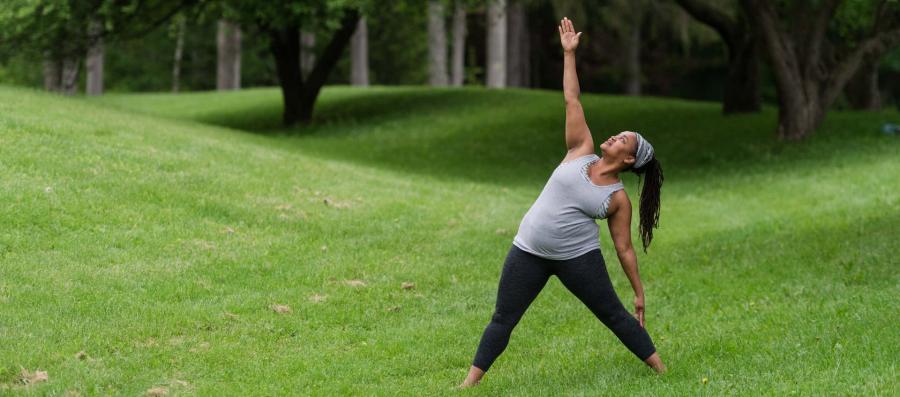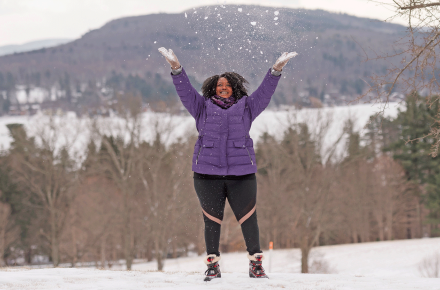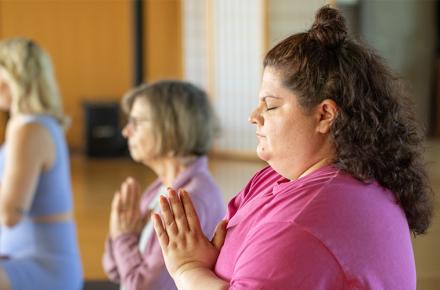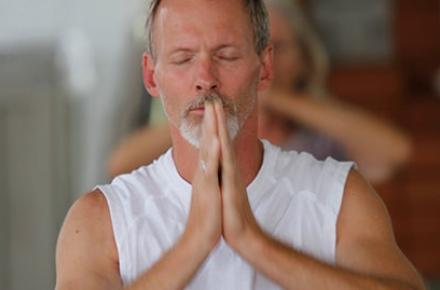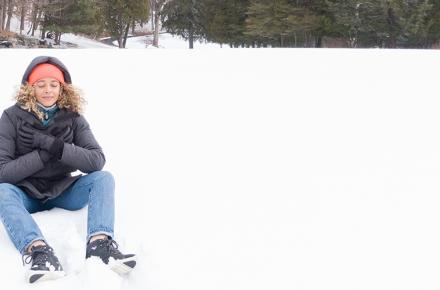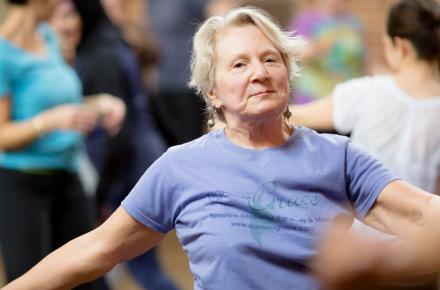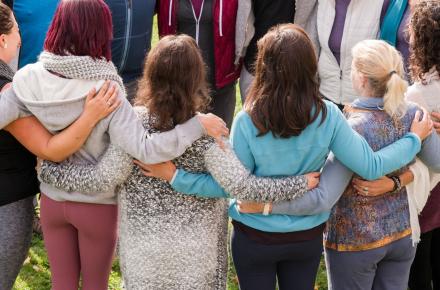4 Daily Practices for Quieting the Monkey Mind

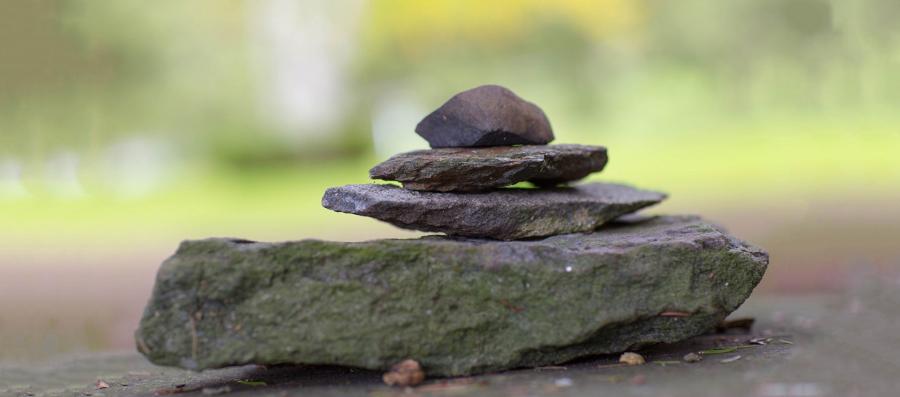
April 28, 2020
When our lives get turned upside down and everything seems uncertain, scary, and overwhelming, what can we do to cope? As I write, I am alone in a tiny house, high on a hilltop in rural Nicaragua, overlooking the Pacific Ocean. I have plenty of food, water, and—in case you were wondering—toilet paper. I am keeping my distance from people, leaving the house only for walks in nature or to swim in the sea. There are plenty of birds and monkeys to keep me company, and Zoom and FaceTime when I need to connect with friends and family back home. Though I am far from home in a foreign land, I feel relatively safe and at peace with my decision to stay.
Still, anxiety and fear are frequent visitors to my little hilltop hideaway. As I struggle to process all that is happening in our world, I often find myself getting hit with wave after wave of difficult emotions, some of which seem almost impossible to bear. There are days when I check the news every 10 minutes and find myself getting caught up in the whirlwind of collective fear and suffering. When I lie awake in bed at 3:00 am and my monkey mind goes wild, creating all kinds of stories, very few of them end with “and then we all lived happily ever after.”
Fortunately, the ancient wisdom and practical tools of yoga, meditation, and mindfulness are available to help us find our center. Here are some of the practices that I have been using daily to help me keep at least one nostril above the churning waters of anxiety and fear. May they also support you in transmuting worry into hope.
Start every day with gratitude.
According to the teachings of Kripalu Yoga, wherever your attention goes, energy flows. So when you find yourself getting caught up in the whirlwind of collective anxiety, rather than giving more energy to the fear, try placing your attention on a positive quality that you would like to cultivate.
One of the most life affirming of those is the quality of gratitude. Expressing gratitude can help you pivot away from a fear-based mindset and invite more peace and ease. It also helps shift the focus away from what you don’t have, what you have lost, and what you are worried about losing, so you can orient your attention toward appreciating all that you do have. Focusing on what you are grateful for creates the conditions for all that is good in your life to expand—or, in the words of Kripalu presenter and positive psychologist Tal Ben-Shahar: “When I appreciate the good in my life, the good in my life appreciates.”
To practice, take time to visualize each person, thing, or situation you are grateful for. One at a time, visualize each person, thing, or situation on your list with the utmost detail and clarity. Allow feelings of gratitude to fill your heart and lift your spirit. Feel these positive feelings flooding your body, crowding out fear with hope. When you’re finished, sit for a few moments and notice what has shifted.
Practice Loving-Kindness Meditation.
It’s easy to feel overwhelmed by all the suffering that’s happening in the world and powerless to help, especially while you’re stuck at home on lockdown. Sending metta, or loving-kindness, to all beings is one thing you can do, even if you must stay glued to your couch.
Loving-kindness meditation is one of the core practices taught by the Buddha. It involves repeating a series of phrases over and over (either out loud or silently in your mind) that are aimed at sending well wishes to all. You always start by sending loving-kindness to yourself and finish by sending loving-kindness to all beings. These are the phrases that I like to use, but you are welcome to make them your own:
May you be happy.
May you be healthy.
May you be safe and protected.
May your life unfold with ease.
- To practice, first visualize yourself in your mind’s eye and send loving-kindness to yourself. Hold the image of yourself steady and repeat the phrases over and over in your mind or aloud: May I be happy. May I be healthy. May I be safe and protected. May my life unfold with ease.
- After sending loving-kindness to yourself, now send it to a beloved person. It doesn’t matter whether or not this person is still with us on the planet. See this person clearly in your mind’s eye and send loving-kindness to them, repeating the phrases: May you be happy. May you be healthy. May you be safe and protected. May your life unfold with ease.
- Next, practice sending loving-kindness to a neutral person. This can be someone that you don’t know very well and don’t have strong feelings about. For example, it could be the checkout clerk at the grocery store, the teller at your bank, or someone that you’ve only met in passing.
- After sending loving-kindness to a neutral person, you can practice sending it to a difficult person. Since this is a tender time, I don’t recommend picking the biggest perpetrator in your life; choose a moderately difficult person. You don’t have to like them or have any contact with them. You’re simply acknowledging that, just like you, this person is part of the human family and deserves compassion.
- Finally, practice sending loving-kindness out to all beings, including those most vulnerable, most alone, and most at risk. During a time of global crisis, this will be the most powerful part of your practice. Make your loving-kindness so big that it bursts forth from your heart and envelopes the suffering of the world in its warm embrace. Take as much time as you need here. When you’re finished, pause, take a few breaths, and notice what you feel.
Visualize the future that you want and thank the universe for it.
It often helps to try and replace the worrisome thoughts with positive thoughts. However, it sometimes takes more than words to reach escape velocity from the downward spiral of anxious thoughts. I remember one of my teachers in the Kripalu School of Ayurveda telling us that you “can’t think your way out of a box made of thought.” Fortunately, there is a tool that you can lean into to help you get free—the power of visualization.
Find a comfortable seat. You can also practice while lying down, if you like. Take a few breaths to help you get settled. Close your eyes and visualize the positive future that you would like to see manifest, as if it were actually happening right here, right now, in this very moment. You might visualize school buses coming down your street to pick up children and take them to schools that are now open; people coming out of their homes to gather for feasting and celebration; doctors and nurses tearing off their protective gear, high-fiving and cheering; the lines on those scary graphs of the numbers of cases and deaths dropping sharply down; sporting events being held in full stadiums; families being reunited; restaurants open and bustling, etc. You can also visualize more specific positive outcomes for yourself and for your family, friends, and colleagues.
See all of this clearly in your mind’s eye and make it a full sensory experience. What sights, sounds, smells, and sensations do you notice? If the visualization evokes positive feelings allow these feeling to arise in your body, noticing them and feeling them fully.
Afterward, thank the Universe for all these wonderful things that have come to pass—feel free to substitute “Universe” with your preferred version of a higher power, or Nature or Mother Earth, or simply say a heartfelt thank you.
When you complete your practice, slowly open your eyes and notice what you feel. Do you feel a teeny bit more empowered and hopeful? Does the world seem just a little bit brighter? I invite you to do this practice every day until the storm passes.
Focus on your strengths and the resilience that you do have.
When all else fails, think about all the things that you have already been through in your life and the resilience that you possess. As you reflect on the obstacles that you have surmounted in your life, you may ask yourself, Which of my strengths did I leverage in order to overcome that challenge? What did I learn from that experience? Make a list of your strengths and the wisdom that you gained and look at it for a good, long while. You might be surprised at how wise and resourceful you actually are.
Take a few moments to journal about how you might use your strengths and your wisdom to help you navigate the challenges you are facing right now. When you have finished journaling, pause, take a few breaths, and notice what you feel. Many people find that this simple practice helps them feel less fearful and more empowered.
Yes, the world is scary and uncertain, and it’s totally okay to allow yourself to feel the fear. But you don’t have to let the fear suck you under. These times build resilience. These times build character. In the words of A. A. Milne, creator of Winnie-the-Pooh: “You are braver than you know, stronger than you seem, and smarter than you think.”





